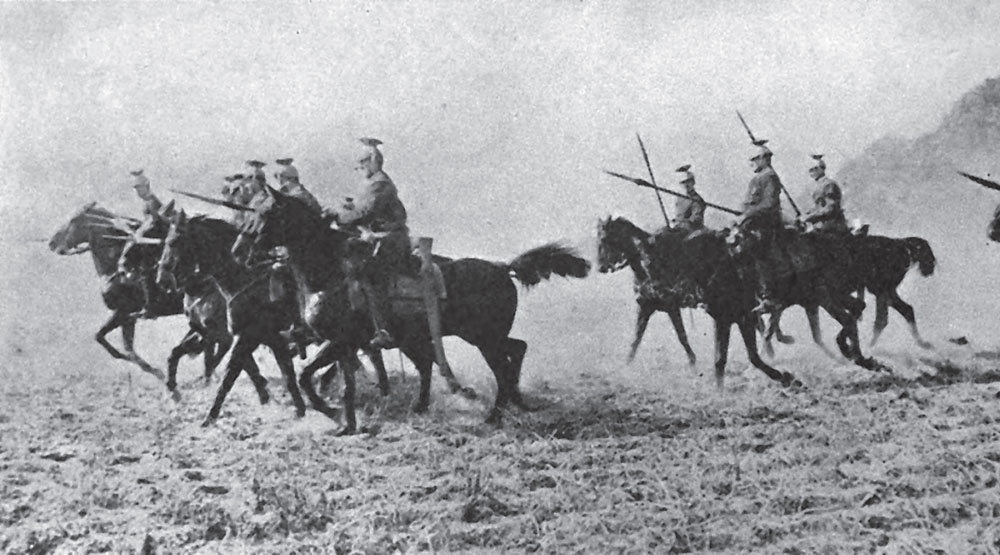
CHAPTER 2
THE RACE TO THE SEA
FROM THE PREFACE TO ‘THE GERMANS AT YPRES’
BY OTTO SCHWINK
The good communications of France, especially in the north, enabled the Allied troops to be moved far more rapidly than our own, for the German General Staff had at their disposal only the few Franco-Belgian railways which had been repaired, and these were already overburdened with transport of material of every description. In spite of this, however, the French and British attacks failed to drive back the German right wing at any point. Not only did they find German troops ready to meet them in every case, but we were also generally able to keep the initiative in our hands.
In this manner by the end of September the opposing flanks had been extended to the district north of the Somme, about Péronne-Albert. A few days later began the Interminable fighting round Arras and Lens, and by the middle of October our advanced troops were near Lille, marching through the richest industrial country of France. The Army Cavalry was placed so as to threaten the hostile left flank, and to bring pressure against the communications with England. Our cavalry patrols pushed forward as far as Cassel and Hazebrouck, the pivots of the enemy’s movements, but they had to retire eastwards again when superior hostile forces moved up to the north-east. The reports which they brought back with them all pointed to preparations by the enemy for an attack on a large scale, and for another effort to turn the fortunes of the campaign to his favour. With this in view all available troops, including newly-arrived detachments from England, were to be used to break through the gap between Lille and Antwerp against our right wing, roll it up and begin the advance against the northern Rhine.
It must be remembered that at the time this plan was conceived the fortresses of Lille and Antwerp were still in French and Belgian possession. It was hoped that Lille, with its well-built fortifications, even though they were not quite up-to-date, would at least hold up the German right wing for a time. Antwerp was defended by the whole Belgian Army of from five to six divisions which were to be reinforced by British troops, and it was confidently expected that this garrison would be sufficiently strong to hold the most modern fortress in Western Europe against any attack, especially if, as was generally believed, this could only be carried out by comparatively weak forces. Thus it seemed that the area of concentration for the Franco-Belgian masses was secure until all preparations were ready for the blow to be delivered through weakly-held Belgium against the rear of the German armies in the west. The plan was a bold one, but it was countered by a big attack of considerable German forces in the same neighbourhood and at the same time. The two opponents met and held each other up on the Yser and at Ypres, and here the last hope of our enemy to seize Belgium and gain possession of the rich provinces of Northern France before the end of the year was frustrated. The question arises how the Germans were able to find the men to do this, since it had been necessary to send considerable forces to the Eastern front to stop the Russian advance.

The famous German Uhlans advancing at the gallop.

German pioneers on the march.
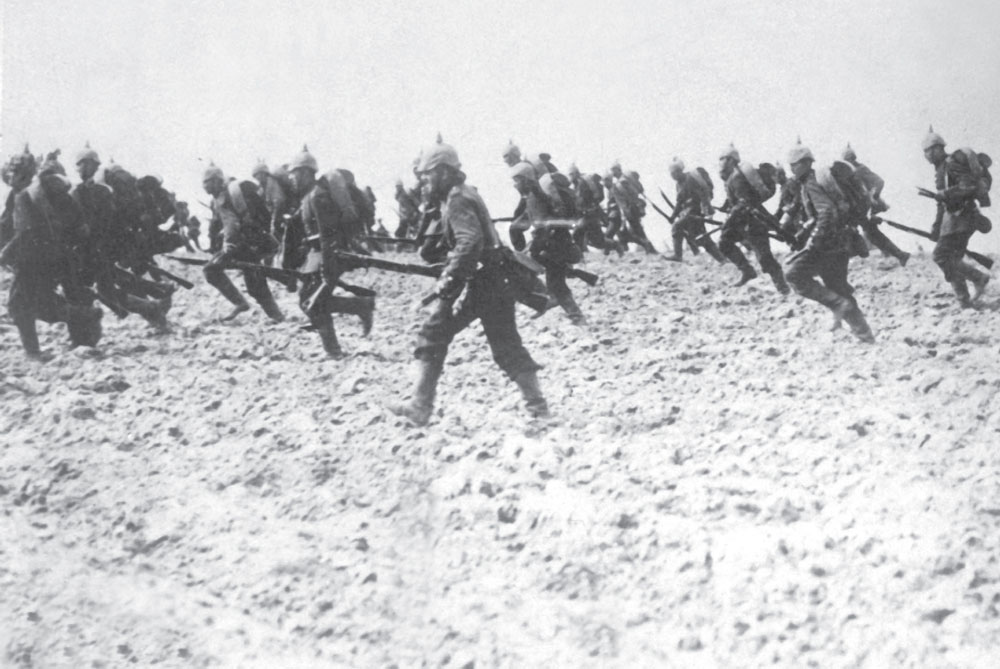
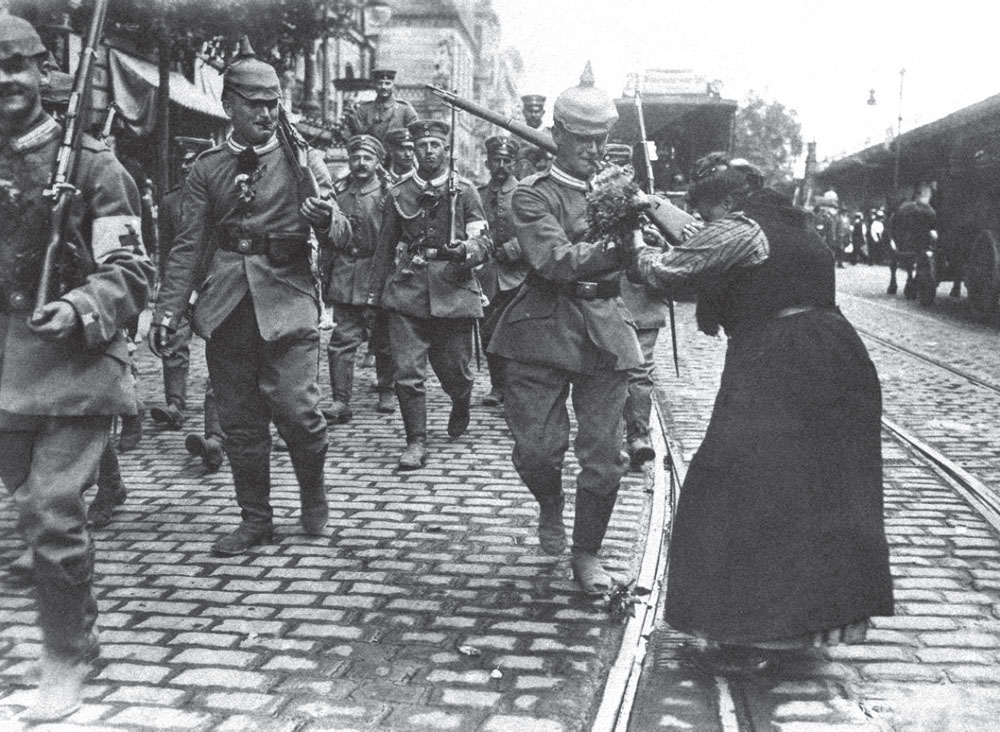
German troops moving towards the Belgian frontier are presented with flowers by an excited population.
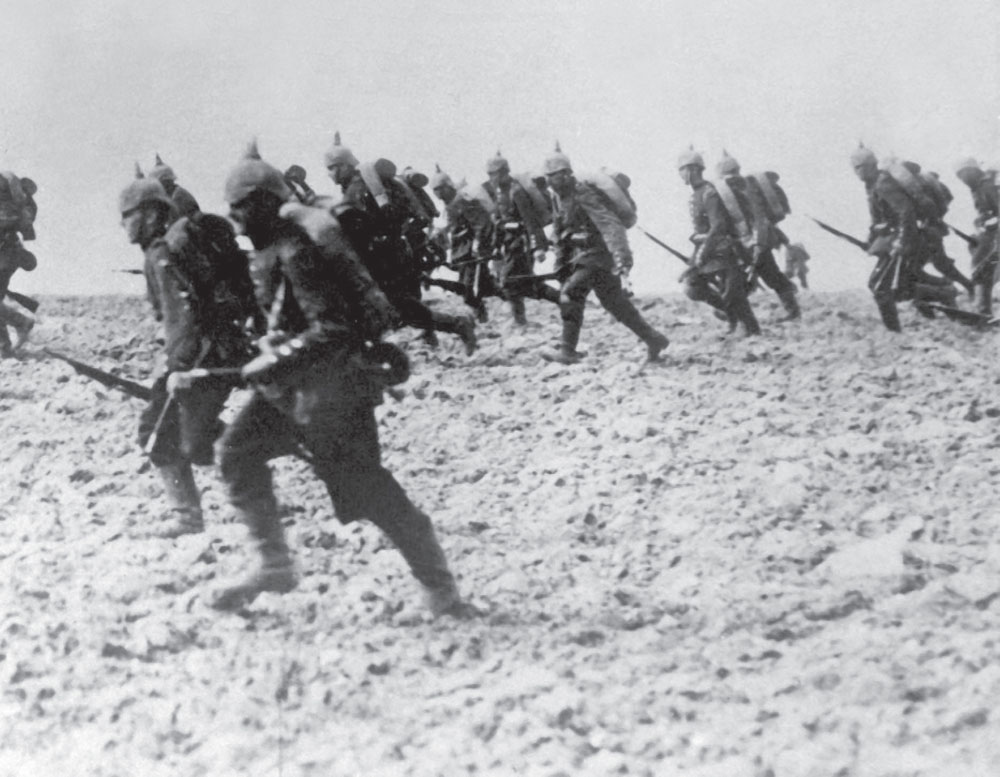
The famous image of German infantry on the advance in 1914.
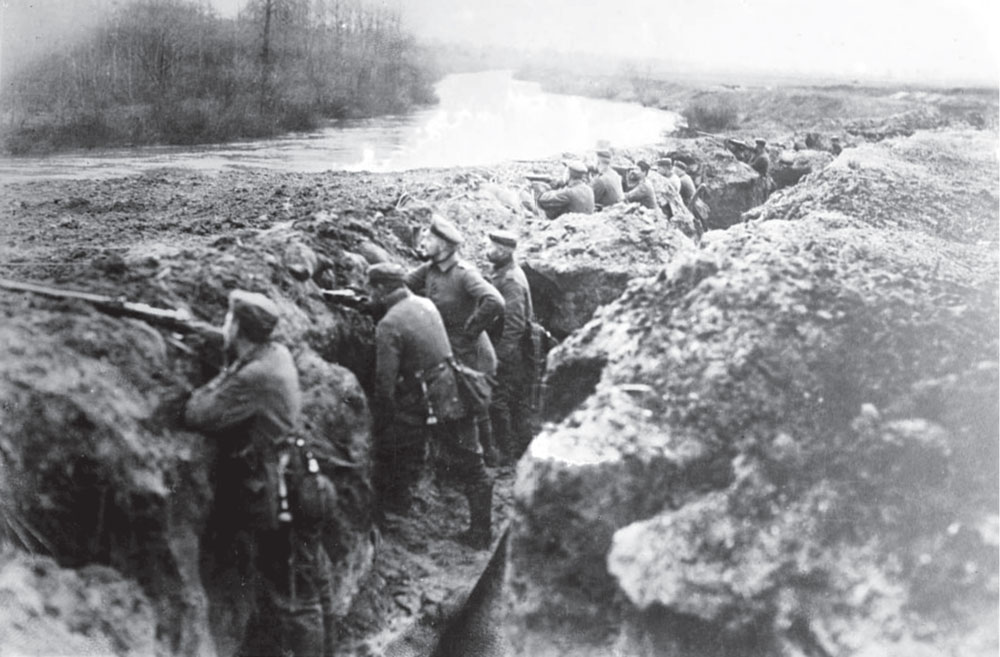
German trenches on the Aisne. These rudimentary constructions were the forerunners of a system which eventually stretched from Belgium to Switzerland.
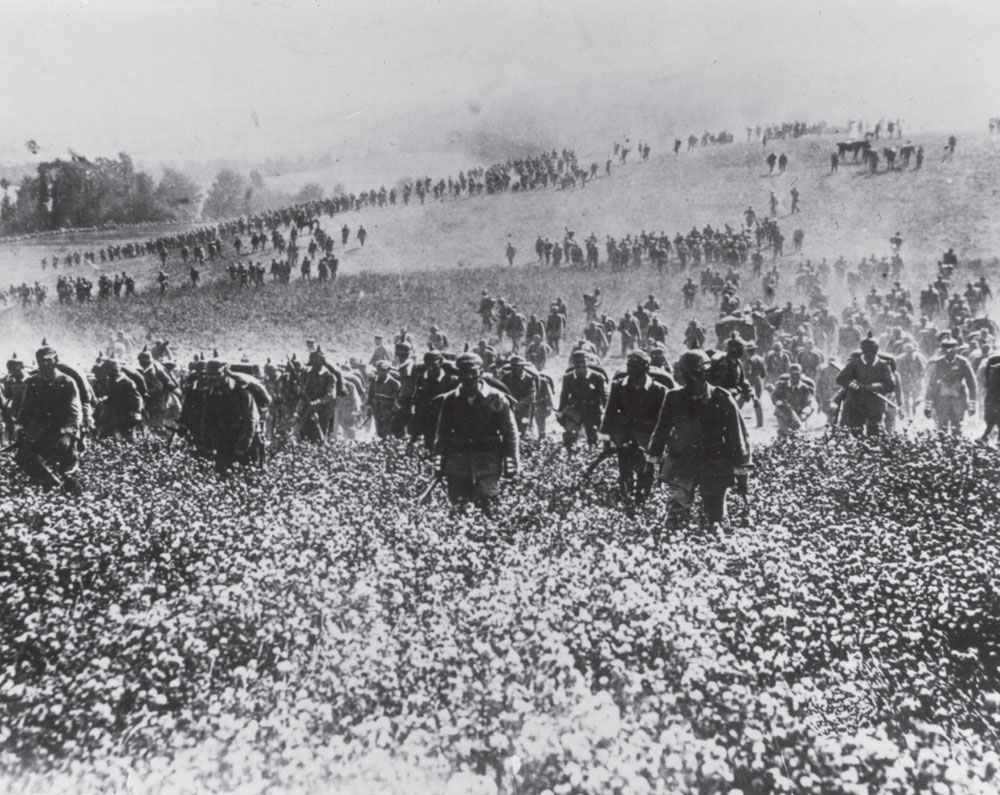
The Imperial German Army advancing Flanders, August 1914.
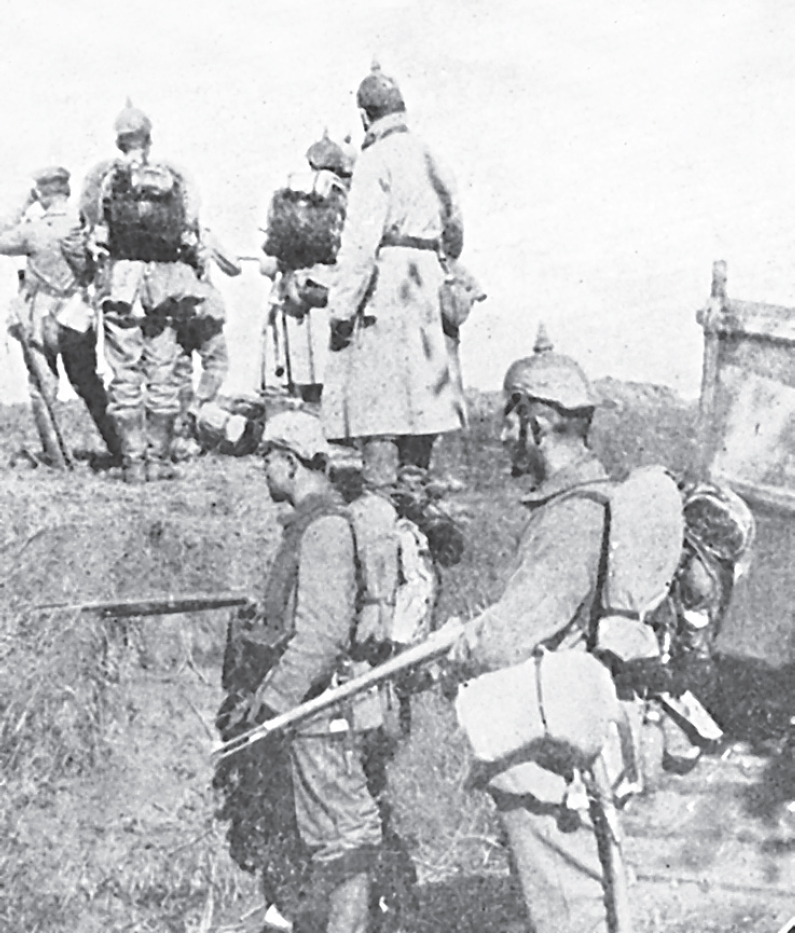
German troops on the advance during 1914 in the short period before the advent of trench warfare.
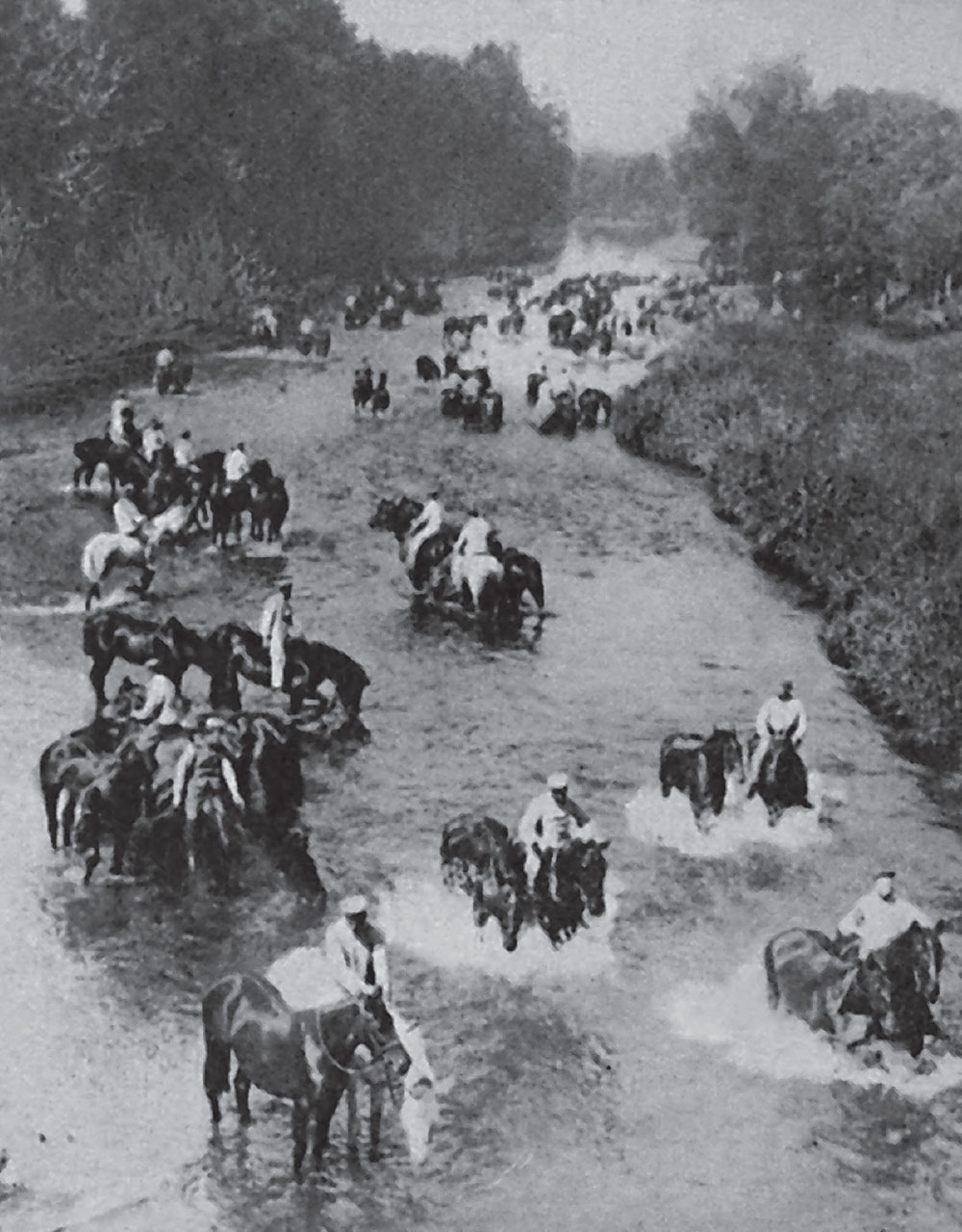
The German invaders watering their horses in a fast moving stream.
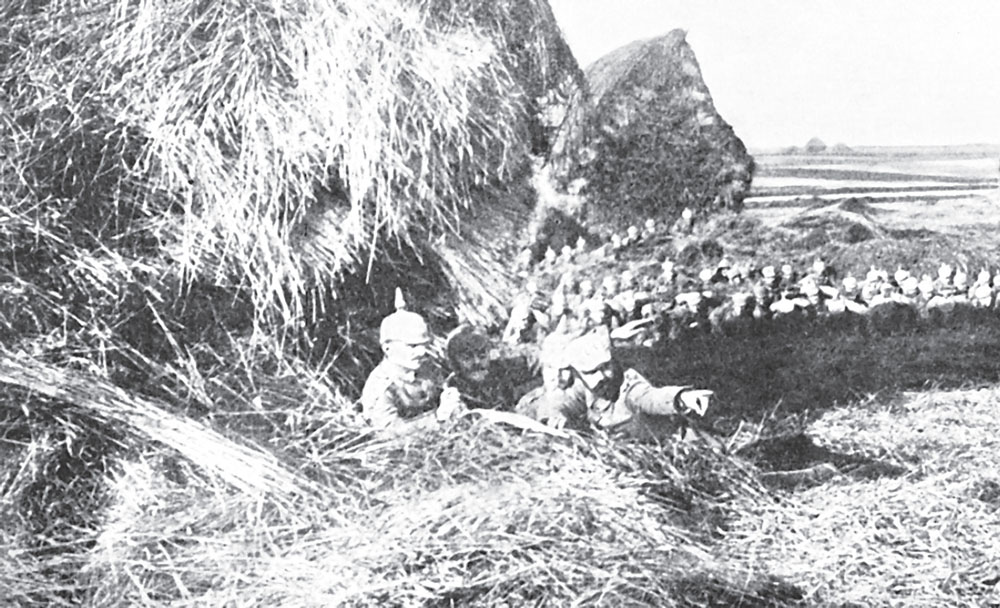
Germans shelter under haystacks at Mons and Charleroi.
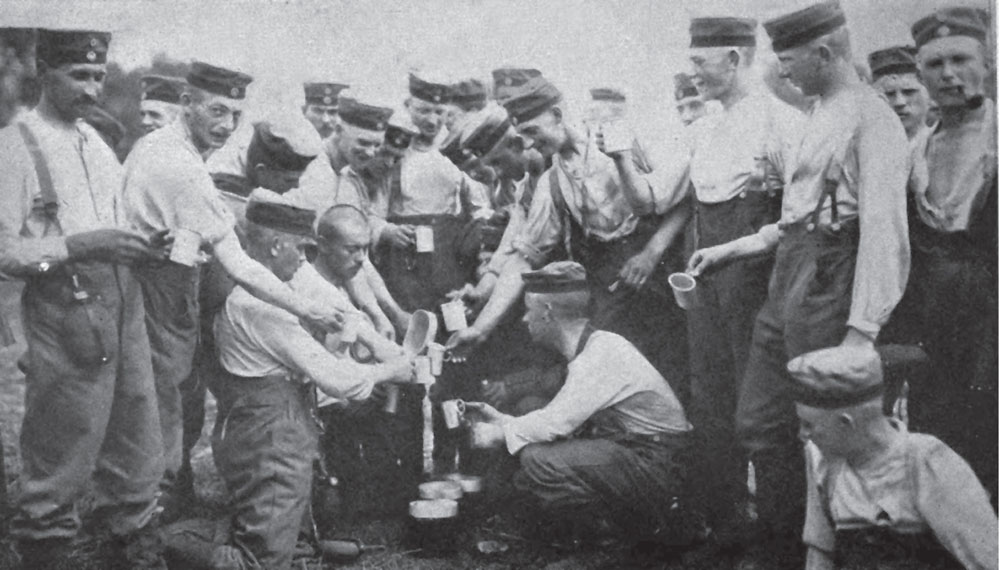
After hours of tortuous thirst on the battlefield the advancing troops are finally able to obtain some much needed water.
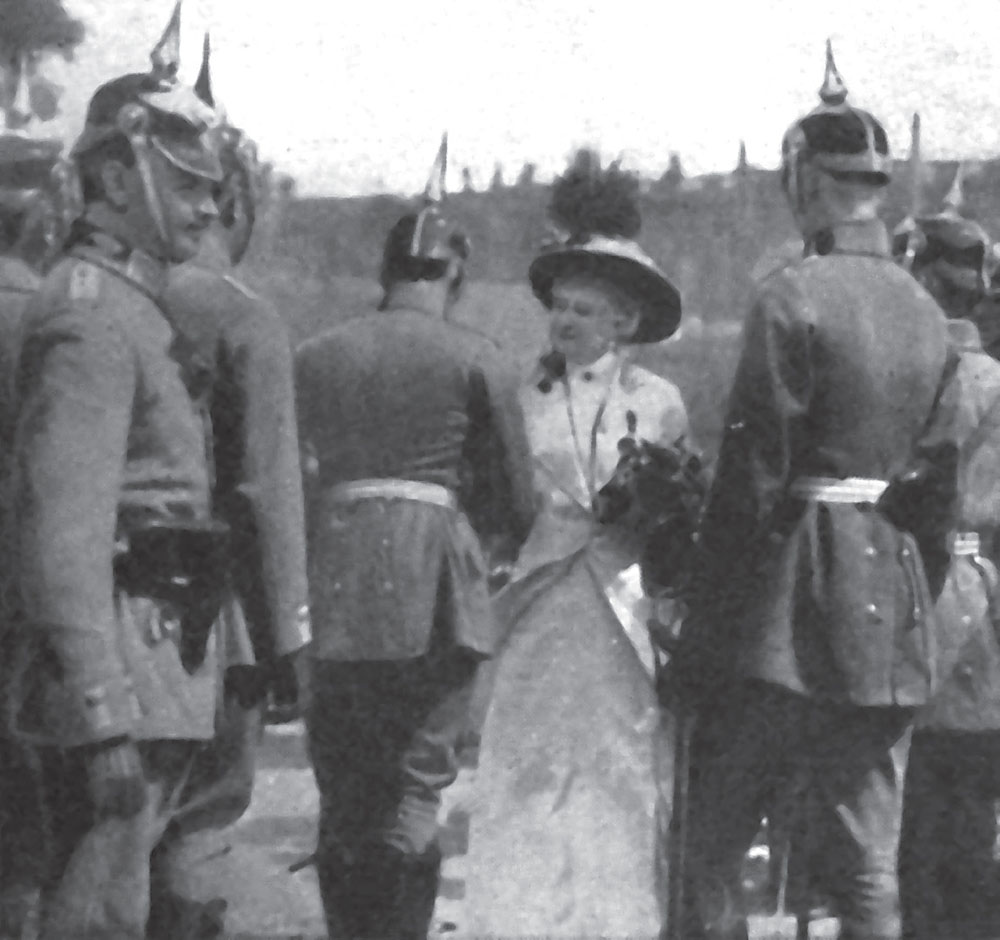
The German Empress presenting roses to Guards officers.
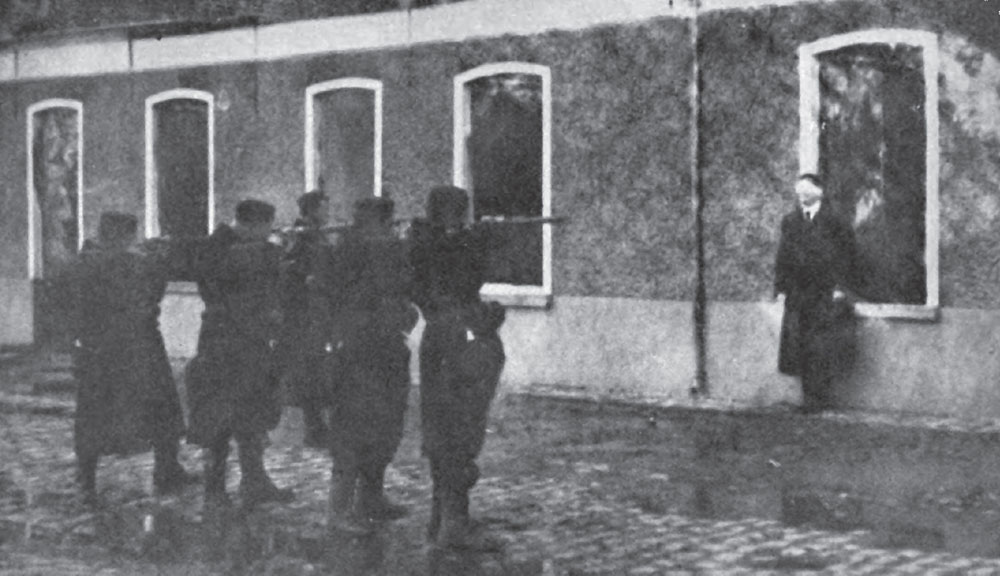
A German spy meeting his death by firing squad.
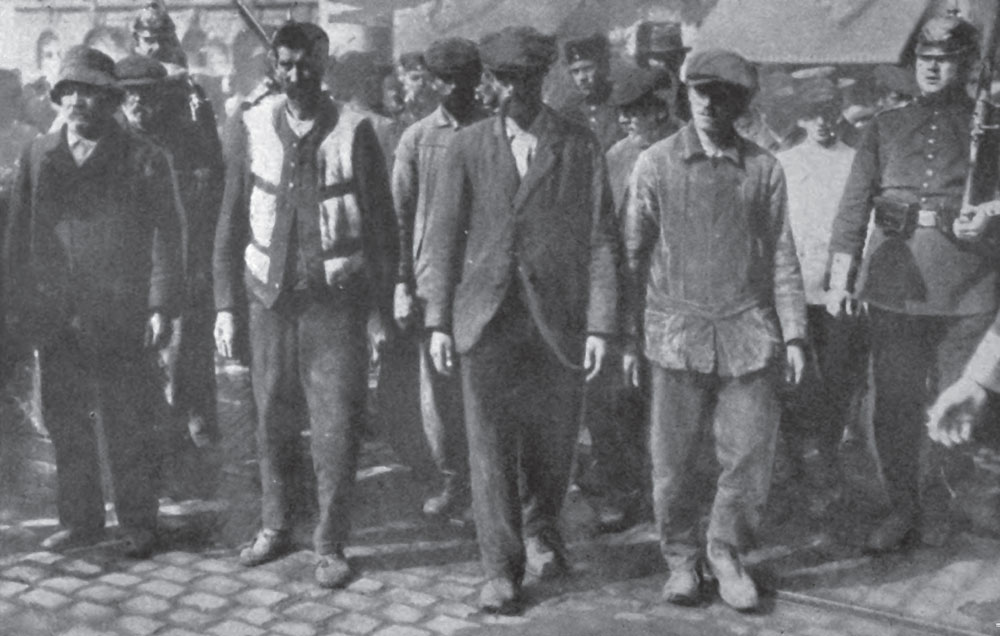
Franc-tireurs, irregular combatants who carry arms but do not wear uniforms. The Germans did not recognize them as soldiers and treated them as non-combatants caught with arms. During the war hundreds, if not thousands, were led out to be shot.
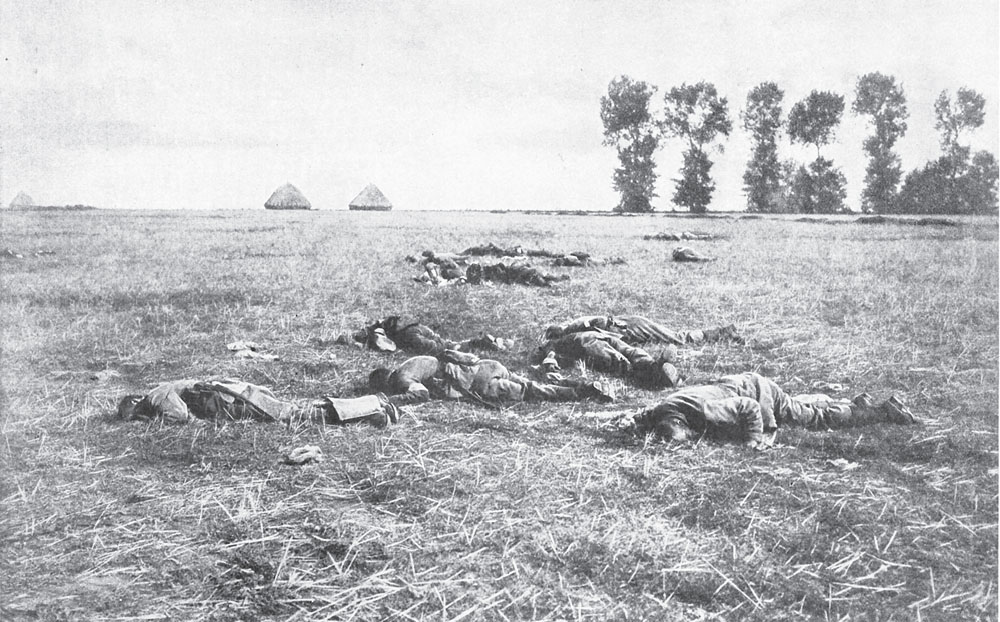
German dead on the morning after the Battle of Langemarck which became known as the Kindermort or ‘slaughter of the innocents’.